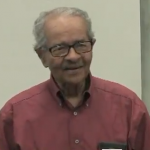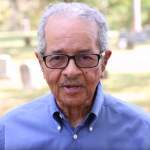The Jesse Lee Bond Story
Jesse Lee Bond was a 20-year-old African American cotton farmer came to the S.Y. Wilson Store to buy planting supplies. the store kept a ledger of purchases, loans and interest owed. After his purchase Bond asked for a receipt, an argument followed, but finally, Sam T. Wilson, the store cashier, reluctantly gave him a receipt. When S.Y. Wilson, the store owner and Sam Wilson’s father, Charles Robert Wilson. were told about the incident they became enraged. The immediately sent Sam Wilson to bring Jesse Lee Bond and the merchandise back to the store.
Bond returned with his Aunt Luanna Bond. As soon as the tow of them entered the store, Charles Robert Wilson and his friend and co-worker, William “Bud” Johnson started shooting at Jesse. They chased him out of the store, and with the help of others aught Bond. they brought him back go the town square and in front of the store they sjhot him to death, castrated him and then dragged his body behind a truck to the Loosahatchie River, where they staked him to the bottom. The body was “found” by authorities five days later. On the death certificate, the coroner said the victim “fell into the Hatch River and was accidentally [sic] drowned.”
The funeral and burial at Grays Creek Church attracted a large crowd, many from neighboring counties who were there to protest the actions of the white authorities. No stone was placed on the grave. It remains unmarked today.
Legal records from the Shelby County archive show that Charles R. Wilson and William Johnson were charged with first-degree murder and tried before a jury. A brief article in the January 23, 1940 issue of the Commercial Appeal indicated that the two men were quickly acquitted.
Omitting Jesse Lee Bond’s story from Arlington’s history sends a clear message: some lives matter, some lives don’t. And while honoring the life of Jesse Lee Bond won’t change Arlington’s past, it can and will determine our future. Honoring this truth in Arlington is not about dissecting which parts of the story we want to accept as fact and identifying who we can hold accountable, especially given that the murderers are deceased. It’s about coming together as a community to grapple with what happened in 1939 and what that means for us in 2018.















Add comment